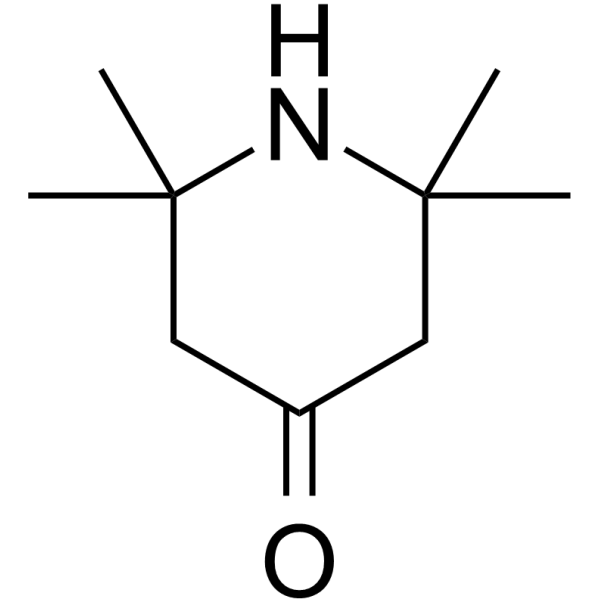All AbMole products are for research use only, cannot be used for human consumption.

For this product's availability, delivery time and price, please email [email protected] directly or click the "Inquiry Now" button below.
Triacetonamine is used as an intermediate for the synthesis of pharmaceutical products, pesticides and photostabilizers for polymers. Triacetonamine is an artifact of plant and fungal extracts using acetone and ammonium hydroxide or natural occurrence of ammonium salts in various steps of the isolation procedures. TAA is the main component of the pyrolysis oil.
| Molecular Weight | 155.24 |
| CAS Number | 826-36-8 |
| Solubility (25°C) | Ethanol 50 mg/mL |
| Storage | 2-8°C, protect from light |
[5] L F Bjeldanes, et al. J Agric Food Chem. Triacetonamine formation in fungal extracts
| Related Others Products |
|---|
| 4-O-Galloylalbiflorin
4-O-Galloylalbiflorin is a natural product that can be derived from the root of Paeonia lactiflora pall. |
| Licoricesaponin E2
Licoricesaponin E2 is a triterpene saponinthat can be found in Glycyrrhiza inflata. |
| Uralsaponin B
Uralsaponin B is a natural product. |
| Daturataturin A aglycone
Daturataturin A aglycone is a natural Steroids isolated from the herbs of Datura tatura. Daturataturin A aglycone can be used for research related to life sciences. |
| (4->2)-Abeo-16-hydroxycleroda-2,13-dien-15,16-olide-3-al
(4→2)-Abeo-16-hydroxycleroda-2,13-dien-15,16-olide-3-al is extracted from the unripe fruits of Polyalthia longifolia var. pendula. |
All AbMole products are for research use only, cannot be used for human consumption or veterinary use. We do not provide products or services to individuals. Please comply with the intended use and do not use AbMole products for any other purpose.


Products are for research use only. Not for human use. We do not sell to patients.
© Copyright 2010-2024 AbMole BioScience. All Rights Reserved.
